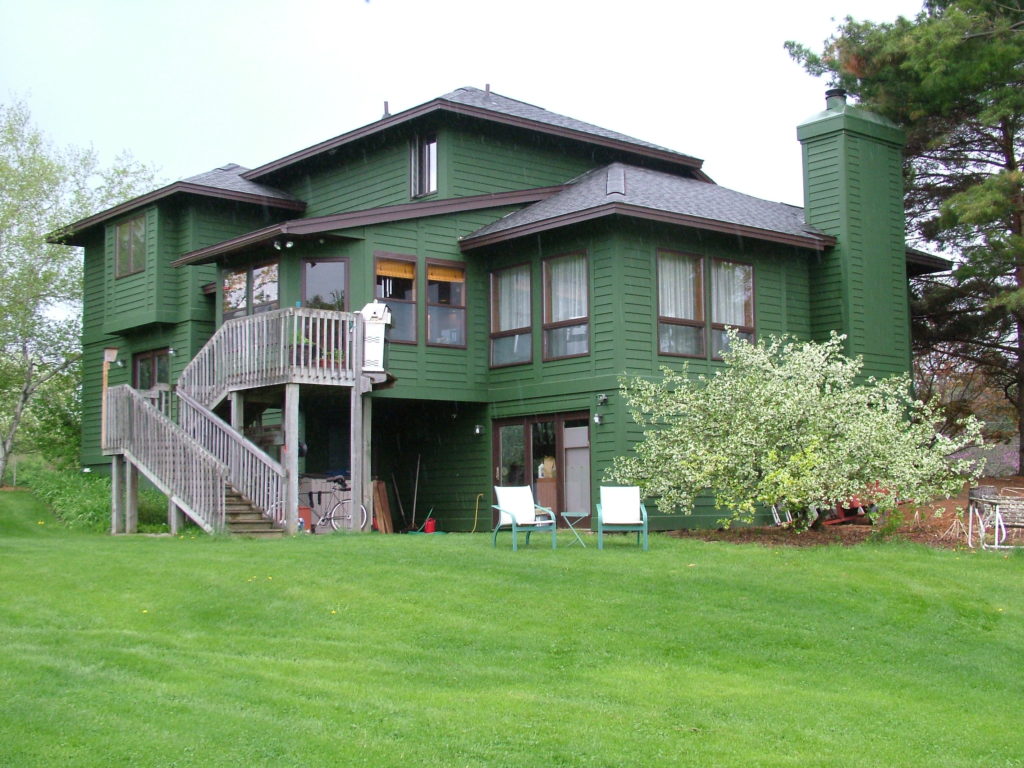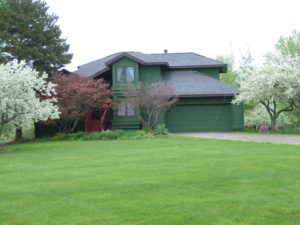When painting an exterior, we want to produce a final product that looks great, but also lasts a long time. Below is some information about how we conduct Exterior Painting Services.
Preparing Surfaces for Exterior Painting in Mid-Michigan
 Power Washing — Power wash all surfaces to be painted
Power Washing — Power wash all surfaces to be painted- Caulking — Caulk any gaps between fascia boards and previously-caulked areas where the caulk is failing. * Some homes, especially historical homes in Lansing and East Lansing, have horizontal lap-board siding that has been caulked. Caulk that seals horizontal lap board siding together can cause paint failures due to trapped moisture. Generally in these cases, if we encounter caulked lapboard, we will remove the caulk so that naturally-occurring moisture can be allowed to vacate these areas.
- Scraping — Any areas with loose or peeling paint will be thoroughly scraped. Common areas that we see needing to be scraped when painting an exterior are window sills and door frames.
- Spot Priming Bare Wood — The purpose of a primer when painting is to give something for the paint to “bite” into. The ideal primer to use on bare wood is an oil-based primer. Oil-based primers sink into the wood’s pores and block water infiltration, so when possible, we prime with oil. Certain circumstances do not allow us to prime with oil, in which cases we can use a latex primer.
Applying the Finishing Coat
Application Method: Applying the top coat can be done via (a) the brush and roll method (b) airless spray or (c) a combination of both methods. The paint application method we employ is highly situational and depends on a number of factors. Spraying allows for a faster application but requires that a lot of time be spent masking off areas to prevent over spray. The brush and roll method is ideal when masking off an area would require more time than just painting an area by hand.
 Moisture Testing — Before applying a top coat, and if the moisture content of the wood is in question, PaintMaster will test the wood with a moisture meter to ensure it can be painted.
Moisture Testing — Before applying a top coat, and if the moisture content of the wood is in question, PaintMaster will test the wood with a moisture meter to ensure it can be painted.- Covering Areas — Before painting, we’ll be sure to cover any areas that might not look great with paint on them; like bushes, decks, and driveways, and walkways.
- Number of Coats — PaintMaster will apply 1 to 2 top coats of paint. Homes and commercial buildings that are being re-painted the same color typically only require a single coat, while structures for which a different color is being applied will require a second coat.
Post-Painting Cleanup on Exteriors
The job isn’t complete until the cleanup is complete. PaintMaster will walk around the home or structure being painted and clean up any stray paint chips, and return lawn and deck furniture to its original position. While cleanup is underway, we’ll also be looking for any areas that need to be touched up, before presenting the work to the customer.
Communication During the Job
During the job, you’ll be able to communicate directly with the crew foreman. The foreman is the point of contact for the customer and can provide the most timely and effective response to customer questions.
Handling Lead Paint When Painting Exteriors
Homes built before 1978 may have been painted with lead paint. Even if a home has been painted several times after the lead paint coat was applied, lead paint may still pose a small, but noteworthy risk to employees and residents during removal. For this reason, the EPA has established guidelines for contractors to follow when renovating homes built before 1978. PaintMaster Painting is an EPA-certified lead-safe firm. For more information on lead-safe removal practices, ask your PaintMaster sales rep.
A Disclaimer
The processes described above are what we will typically do, but will vary depending on the specifics of your job. For a full description of the processes we will undertake for your job, please refer to your proposal.
